My Deep Sky Observations with the eVscope 2 (Complete List of Observed DSO)
List of Observed Sky Objects | Remarks | References
Archive
Since the beginning of December 2021 until the end of December 2023, I owned an Unistellar eVscope 2 telescope for observing and taking photos of deep sky objects. On this page, I collected all the sky objects (more than 80 different sky objects) that I visited with the eVscope 2 (from all samples that I owned; third and "final" sample received in August 2022 and sold in December 2023).
Note: As I sold my eVscope 2 at the end of December 2023, no more new photos will be added.
See also
- My Visual Deep Sky Observations (Complete List of Visually Observed DSO)
- My Visual Deep Sky Observations with my Electronic Telescopes (Complete List of Observed DSO)
- My Deep Sky Observations with the eVscope (Complete List of Observed DSO) Archive
- My Deep Sky Observations with the eVscope 2 (Complete List of Observed DSO) Archive
- My Deep Sky Observations with the Vespera (Complete List of Observed DSO) Archive
- My Deep Sky Observations with the Vespera Pro (Complete List of Observed DSO)
- My Deep Sky Observations with the Atik Infinity (Complete List of Observed DSO) Archive
- My Deep Sky Observations with the ZWO ASI224 (Complete List of Observed DSO) Archive
The linked object numbers lead to the detail pages for the respective objects; these typically contain at least one photo from each observation sesssion as well as further information about the object.
List of Observed Sky Objects
Object details can be obtained using the links to the relevant deep sky objects. Smaller sky objects that are also included in photos are usually not listed on their own.
|
DSO Details
|
Name | Constellation | Type | Photo | Remarks |
| M 1 | Crab Nebula | Taurus | GE/SR | 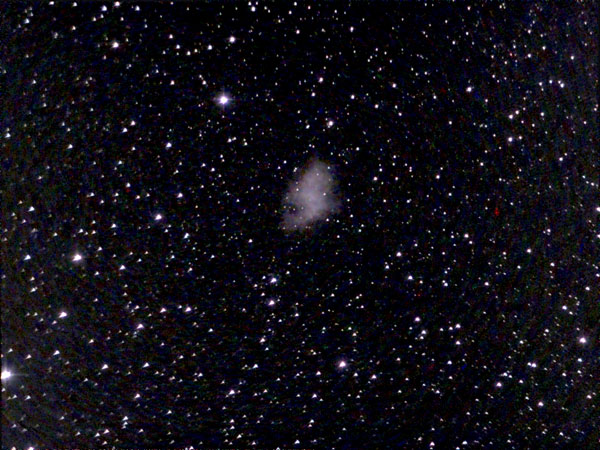 |
More distinct with longer exposure times; supernova remnant |
| M 2 | Aquarius | GC | 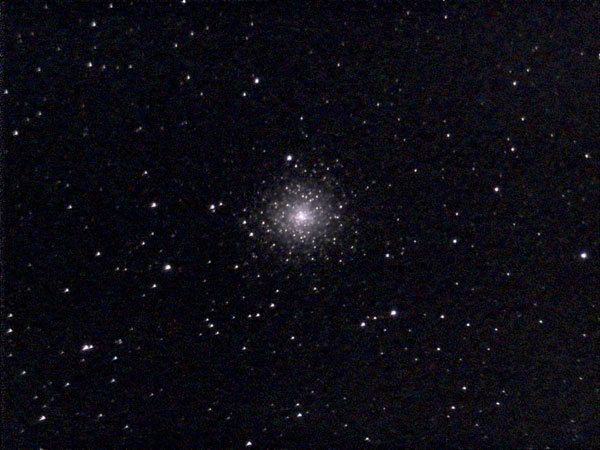 |
Nice globular cluster, one of the larger ones | |
| M 11 | Wild Duck Cluster | Scutum | OC | 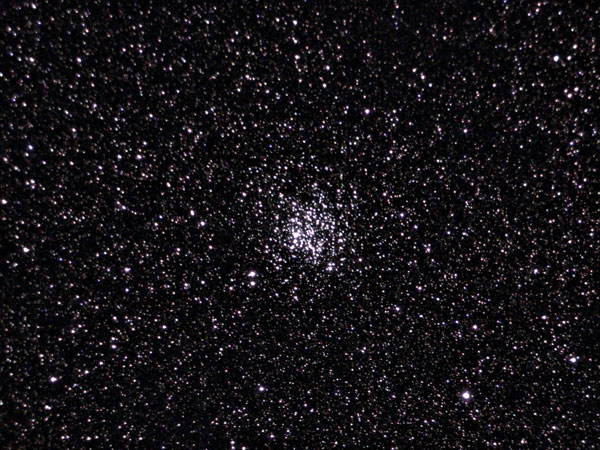 |
Is located in the Scutum cloud, a special section of the Milky Way; therefore the photos are full of stars. |
| M 13 | Hercules Cluster | Hercules | GC | 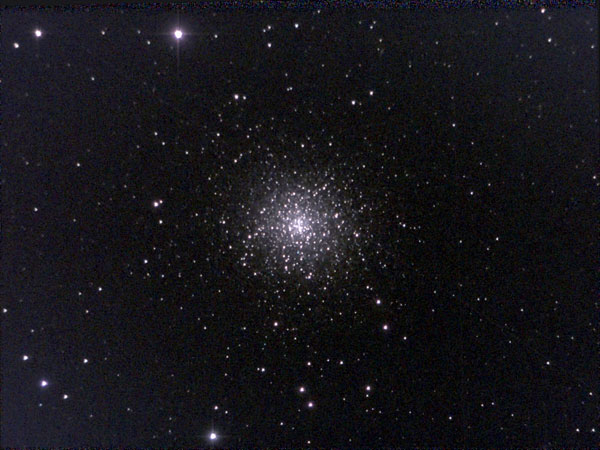 |
Nice globular cluster, one of the largest ones, larger than M 5 |
| M 15 | Pegasus | GC | 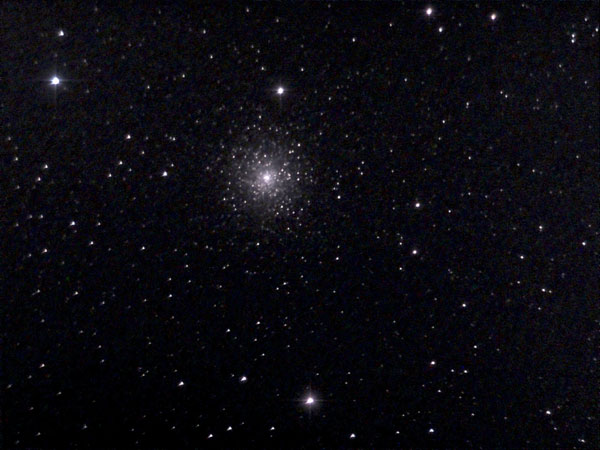 |
Supposedly, this is the best globular cluster in autumn, bright core. | |
| M 16 | Eagle Nebula | Serpens | GN | 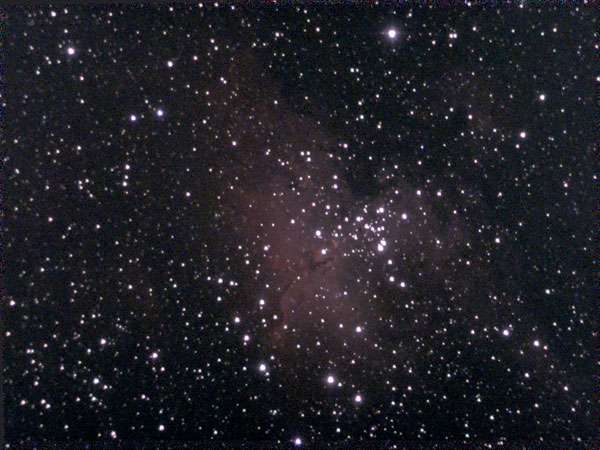 |
Star cluster M 16 embedded in the Eagle Nebula IC 4703 |
| M 17 | Omega/Swan Nebula | Sagittarius | GN | 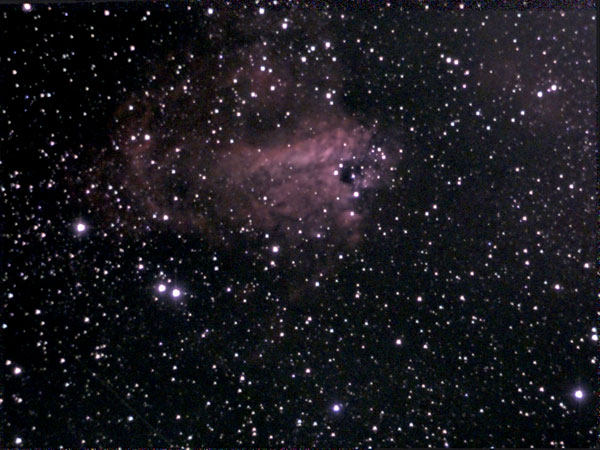 |
One of the most beautiful emission nebulae; in the reversing telescope, some observers recognize a swan... |
| M 27 | Dumbbell Nebula | Vulpecula | PN | 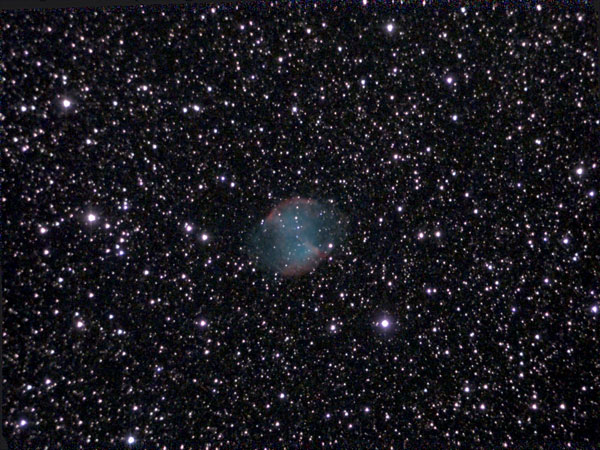 |
Nice |
| M 29 | Cygnus | OC | 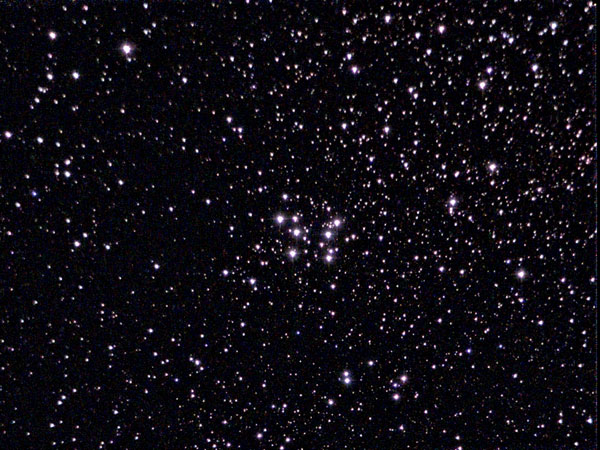 |
Pattern created from only a few stars | |
| M 30 | Capricornus | GC | 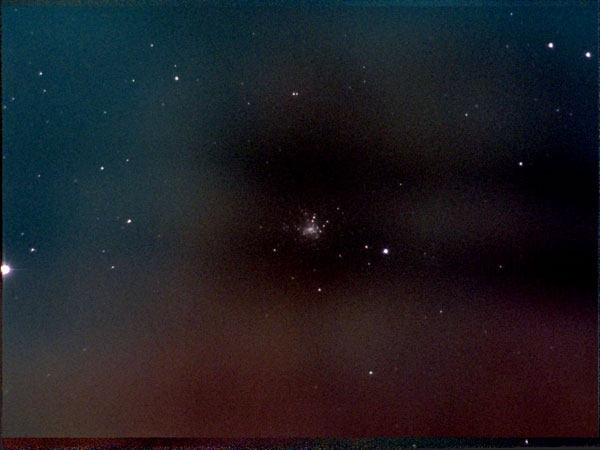 |
Observation disturbed... | |
| M 31 | Andromeda Galaxy | Andromeda | G | 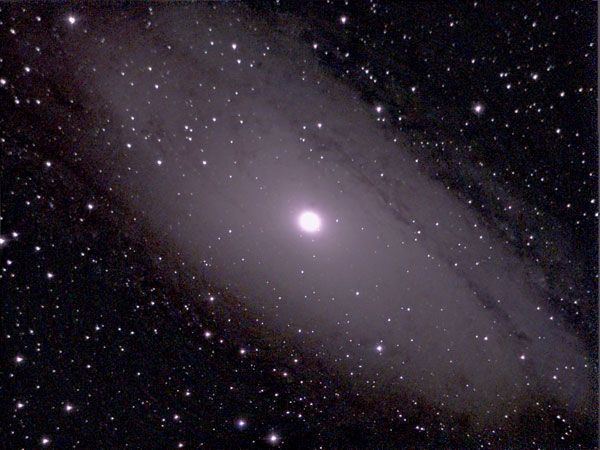 |
Together with M 32; M 31 is too large for the eVscope 2's field of view |
| M 33 | Triangulum Galaxy | Triangulum | G | 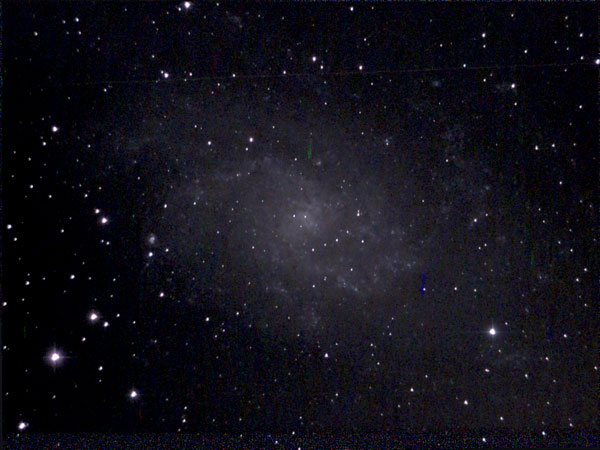 |
Very faint, details recognizable only after longer durations in EV mode. |
| M 35 | Gemini | OC | 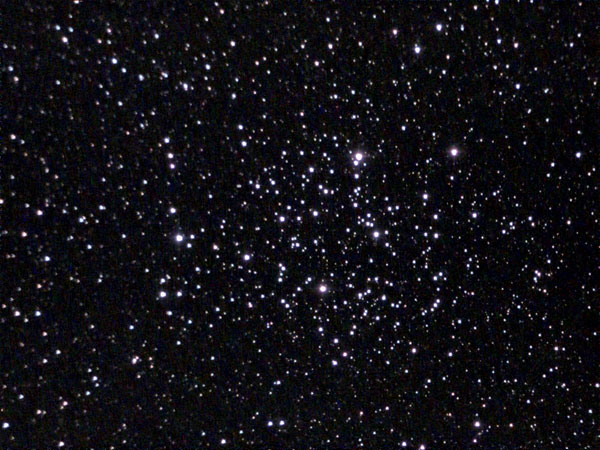 |
Large and nice open star cluster | |
| M 36 | Auriga | OC | 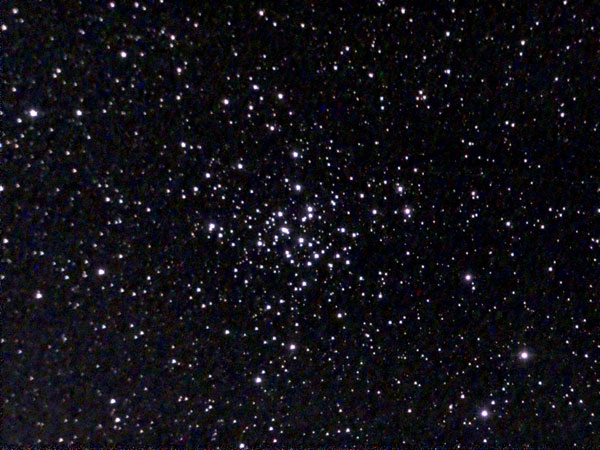 |
Nice open star cluster, smaller than M 35 | |
| M 37 | Auriga | OC | 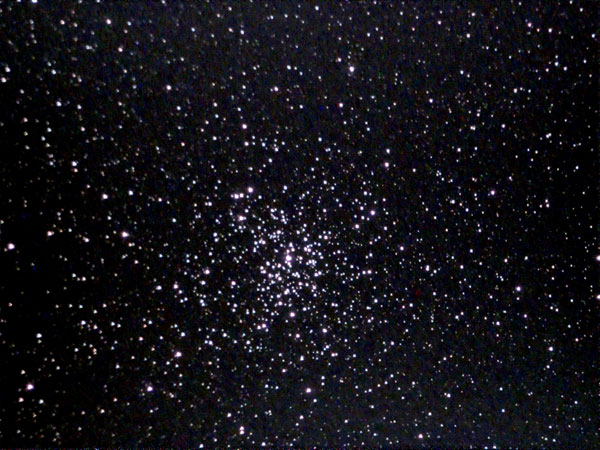 |
Nice, very dense open star cluster | |
| M 38 | Auriga | OC | 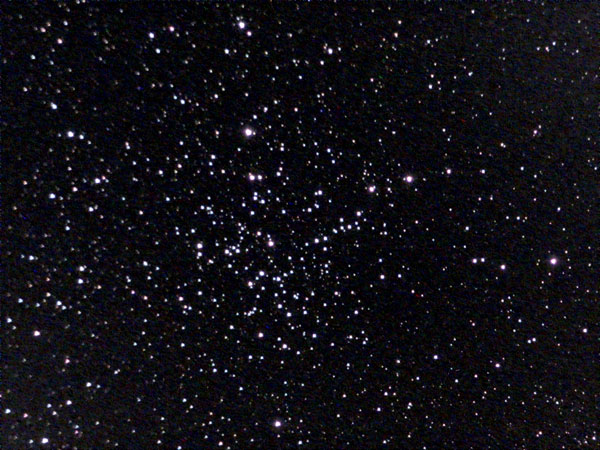 |
Nice open star cluster, larger than M 36, not as dense as M 37 | |
| M 42 | Orion Nebula | Orion | GN | 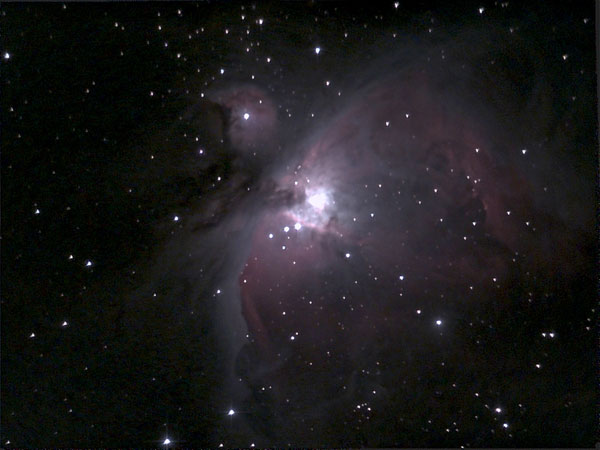 |
Larger section and apparently more details than with the eVscope |
| M 43 | De Mairan's Nebula | Orion | GE | 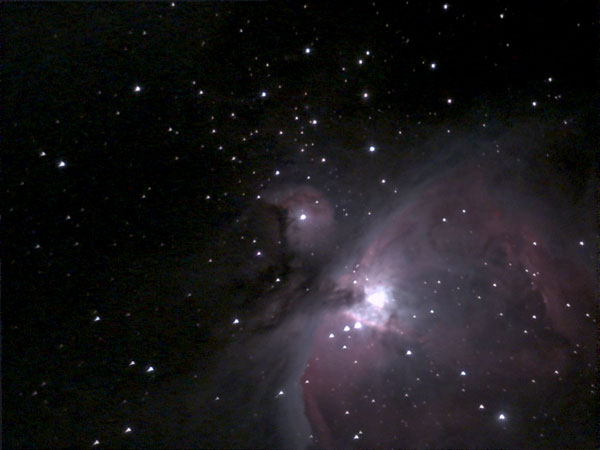 |
Part of M 42 |
| M 45 | Pleiades, Seven Sisters | Taurus | OC | 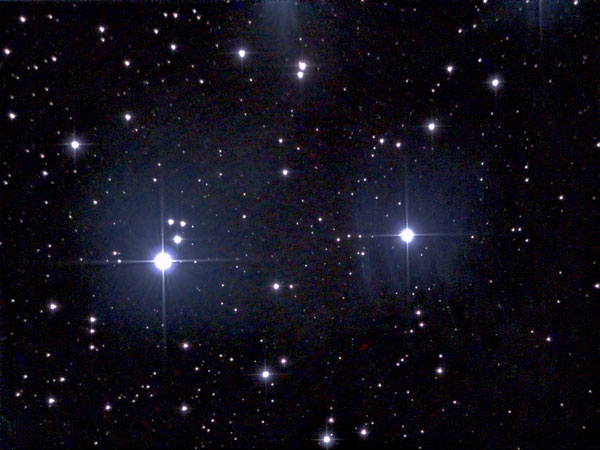 |
Too large for the eVscope 2's field of view; faint nebula somewhat visible |
| M 50 | Monoceros | OC | 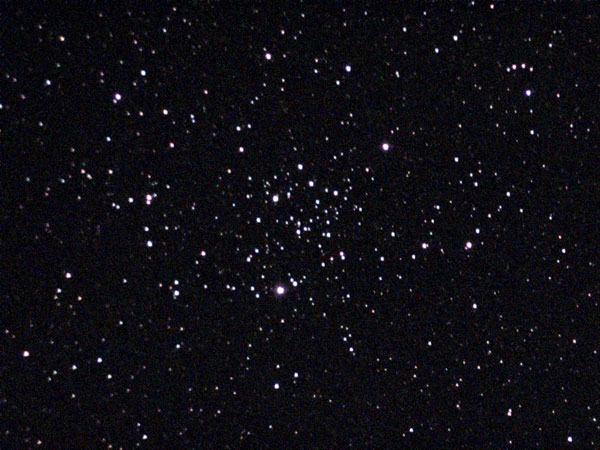 |
Nice large open star cluster with many fine and some bright stars | |
| M 51 | Whirlpool Galaxy, with NGC 5195 | Canes Venatici | G | 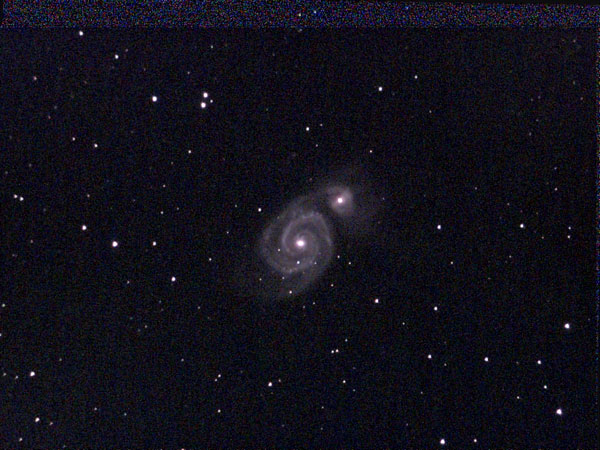 |
Nice spiral galaxy with connected satellite galaxy NGC 5195 |
| M 52 | Cassiopeia | OC | 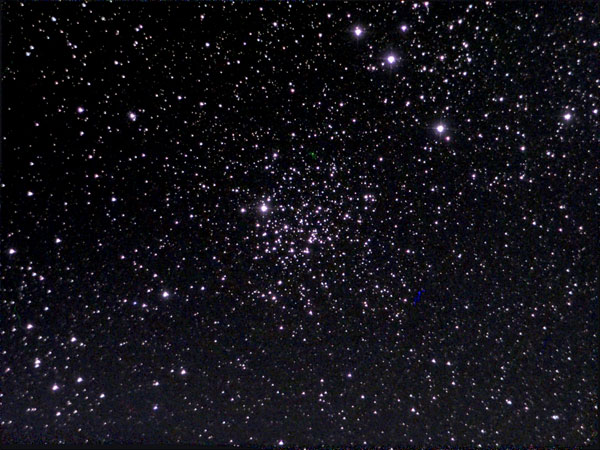 |
Medium-sized open star cluster | |
| M 56 | Lyra | GC | 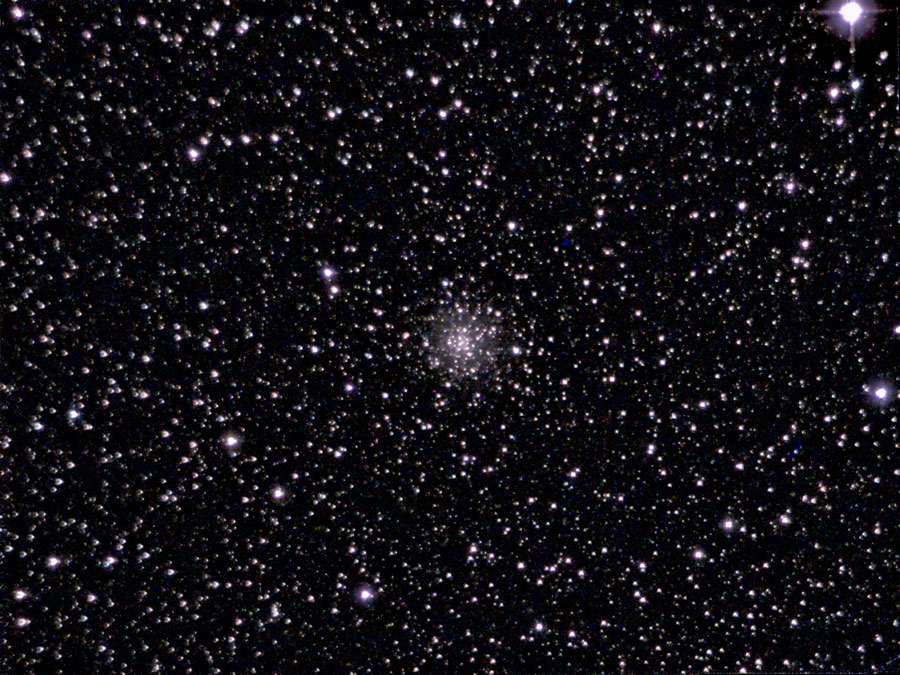 |
One of the smaller globular star clusters | |
| M 57 | Ring Nebula | Lyra | PN | 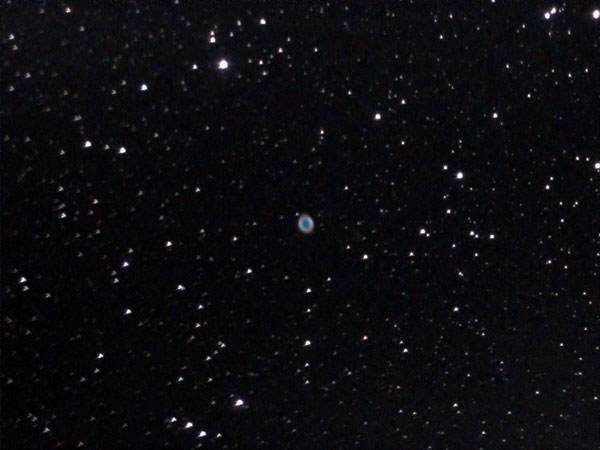 |
Ring clearly visible |
| Sagitta | GC | 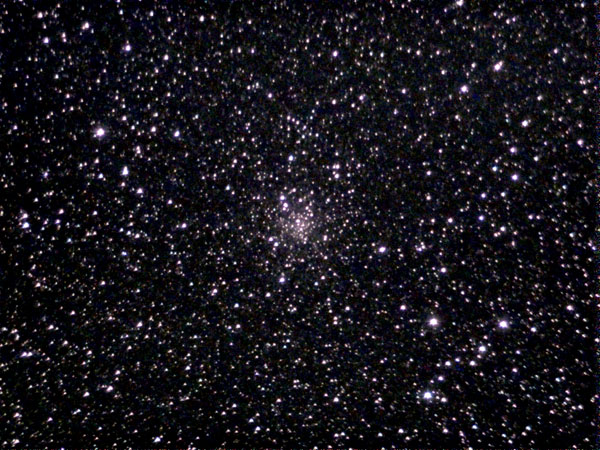 |
According to Stoyan, an unusually loose globular star cluster | ||
| M 74 | Pisces | G | 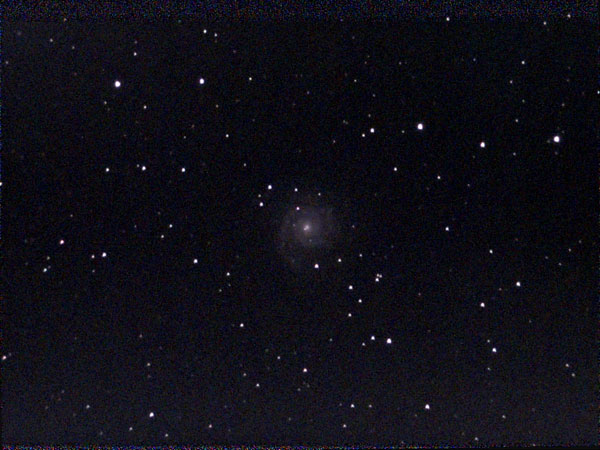 |
Nice spiral galaxy, but in the eVscope 2 just a faint dot/glow... | |
| M 76 | Small Dumbbell Nebula | Perseus | PN | 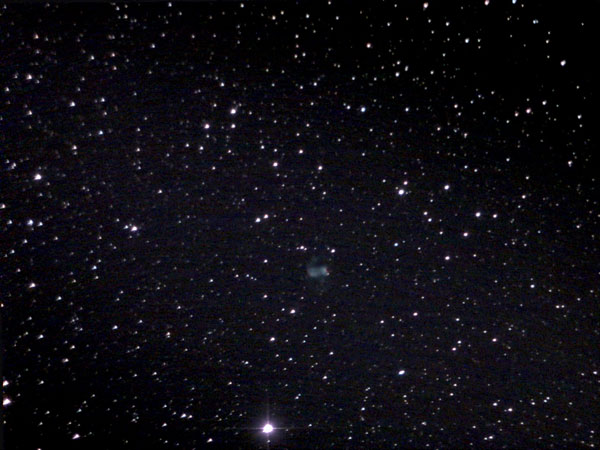 |
Small, colorful, rectangular |
| M 77 | Cetus | G | 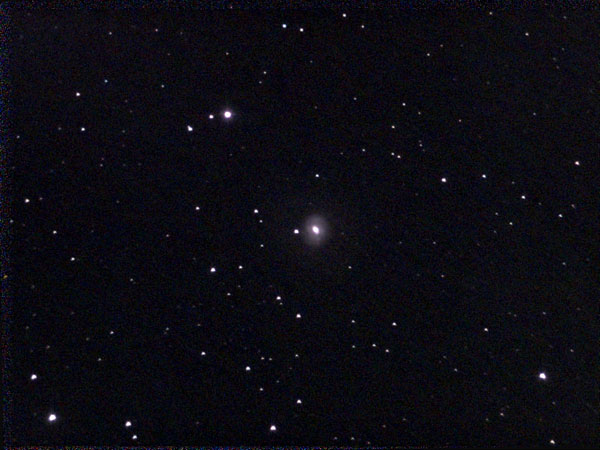 |
Spiral galaxy, a bit more to see than with M 74, but in the end just a soft dot in the eVscope 2 | |
| M 78 | Orion | GE | 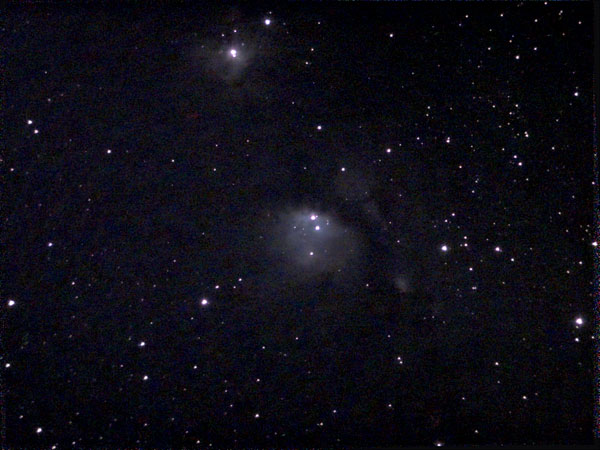 |
Faint, but identifiable using two stars | |
| M 81 | Bode Galaxy | Ursa Major | G | 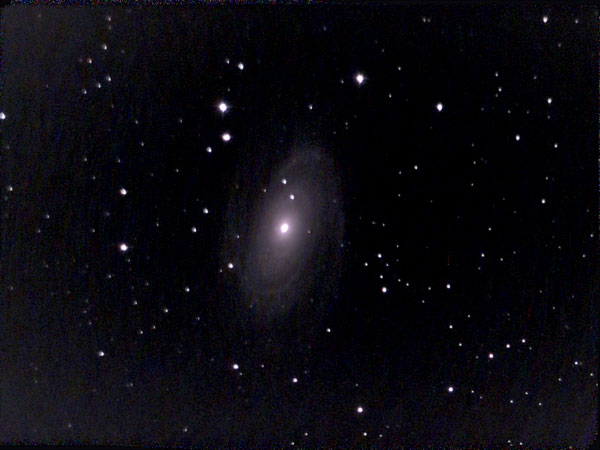 |
Nice spiral galaxy; the spiral is not very conspicuous in the eVscope |
| M 82 | Cigar Galaxy | Ursa Major | G | 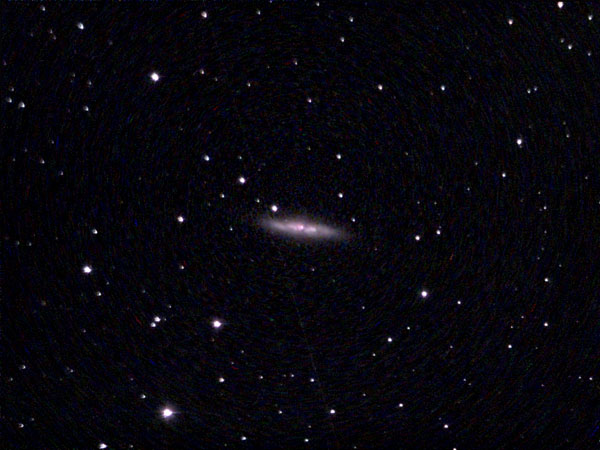 |
Elongated irregular galaxy (cigar), dirsturbed by an encounter with M 81 |
| M 84 | Virgo | G | 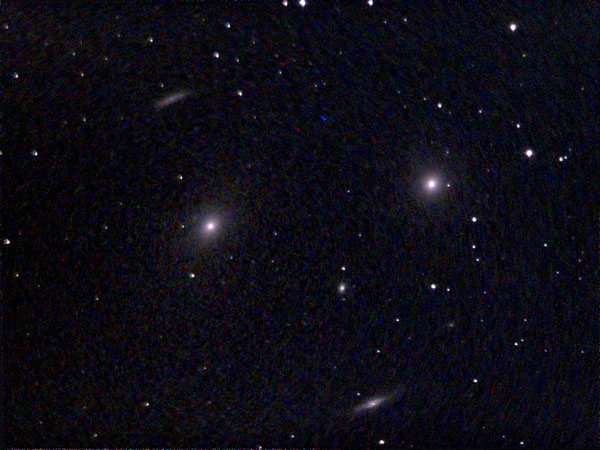 |
Part of Markarian's Chain; elliptical galaxy that can be seen together with M 86 in the eVscope's field of view (+ NGC 4387 and a bit of NGC 4402); forms together with M 86 and NGC 4387 the "Great Galactic Face" (the latter is best accessed via NGC 4387). | |
| M 86 | Virgo | G |  |
Part of Markarian's Chain; elliptical galaxy that can be seen together with M 86 in the eVscope's field of view (+ NGC 4387 and a bit of NGC 4402); forms together with M 84 and NGC 4387 the "Great Galactic Face" (the latter is best accessed via NGC 4387). | |
| M 92 | Hercules | GC | 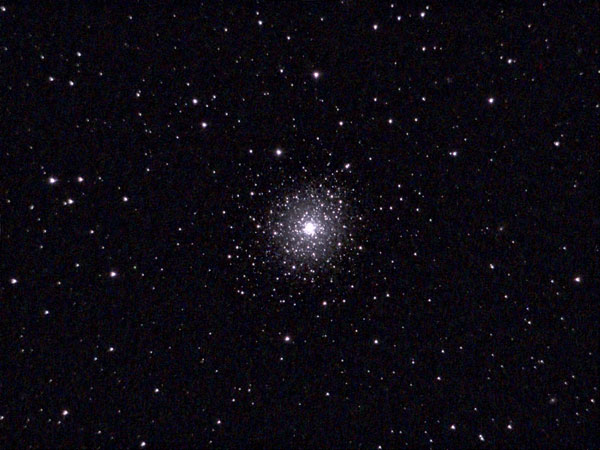 |
Nice globular star cluster, smaller than M 13, but brighter core | |
| M 95 | Leo | G | 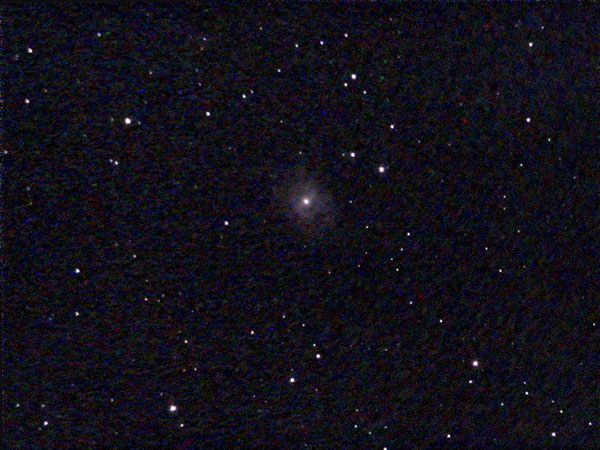 |
Small barred spiral galaxy, relatively faint, but the bar is visible. Forms a pair with M 96, but almost too far away for the eVscope 2 (40'). But managed to get both on one photo! | |
| M 96 | Leo | G | 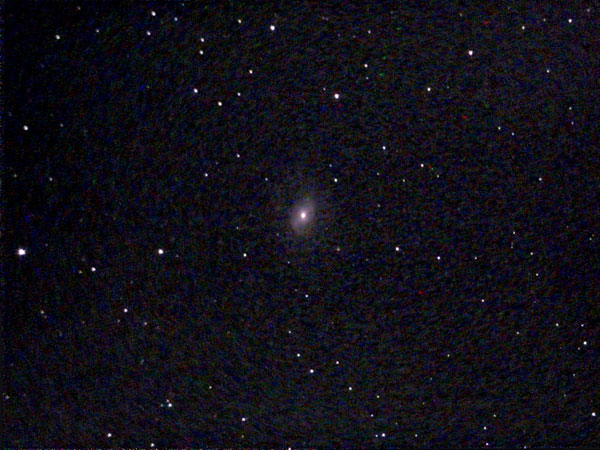 |
Spiral galaxy, forms a pair with M 95, but almost too far away for the eVscope 2 (40'). But managed to get both on one photo! | |
| M 97 | Owl Nebula | Leo | G | 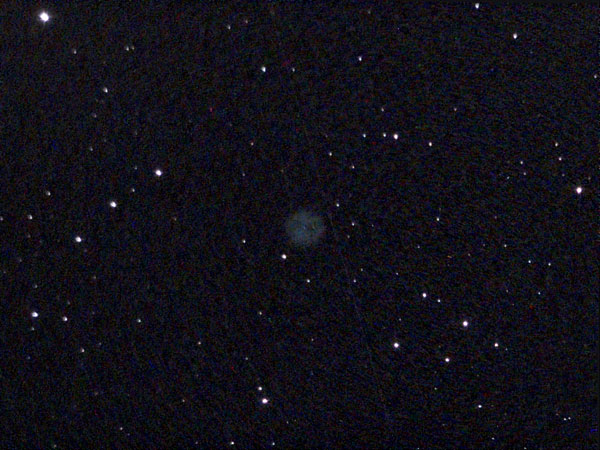 |
Small green dot with two dark spots |
| M 101 | Pinwheel Galaxy | Ursa Major | G | 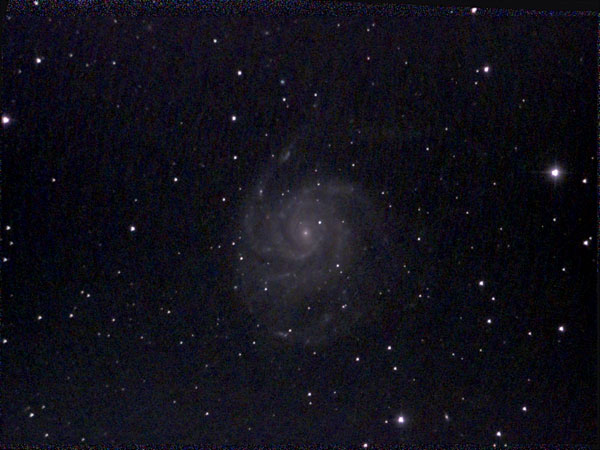 |
Spiral galaxy, seen face-on, similar to M 99 and M 100, but much larger than both; quite impressive in the eVscope 2 |
| M 102 | Spindle Galaxy | Draco | G | 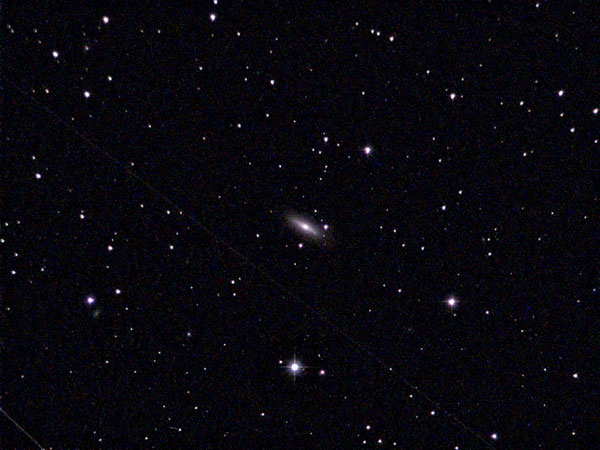 |
Seen edge-on; shares the name "Spindle Galaxy" with two other galaxies |
| M 103 | Cassiopeia | OC |
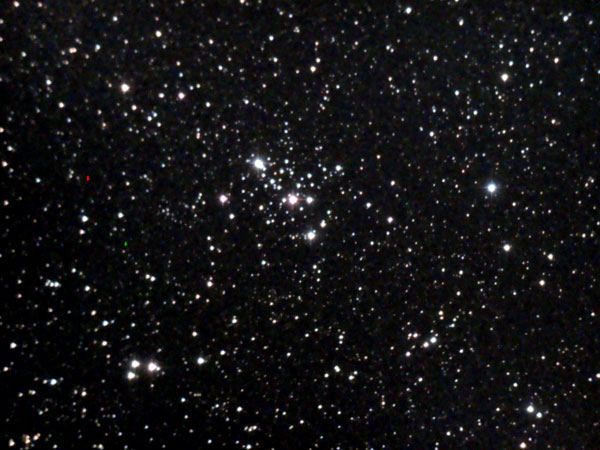 |
Open star cluster with many fine stars; the bright stars form a triangle. | |
| M 105 | Leo | G | 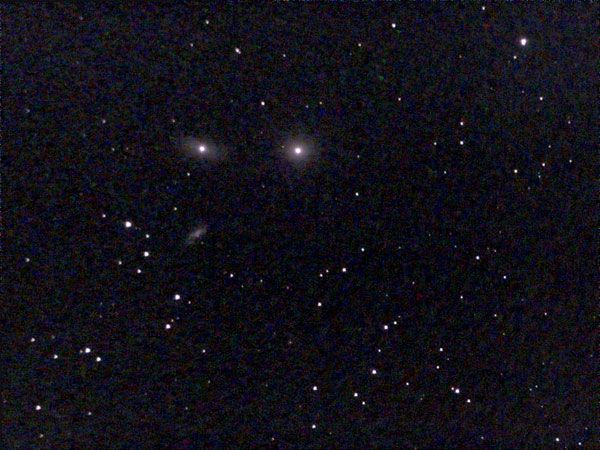 |
Bright elliptical galaxy; can be seen together with the galaxies NGC 3384 (elliptical) and the smaller NGC 3389 (spiral) in the same field of view in the eVscope 2. | |
| B 33 | Horse Head Nebula | Perseus | DN | 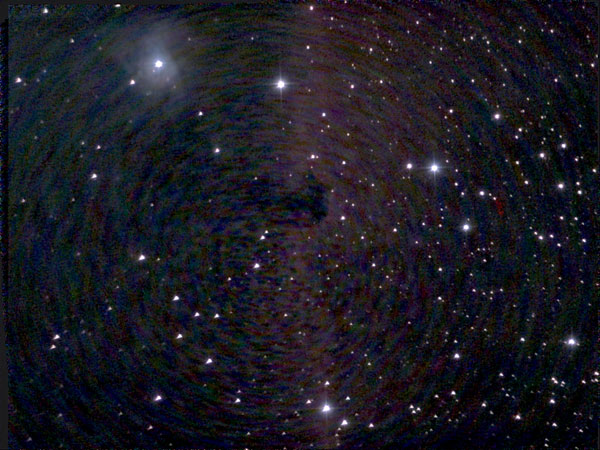 |
Always a challenge; more details after 10 minutes of exposure |
| IC 405 | Flaming Star Nebula | Orion | GN | 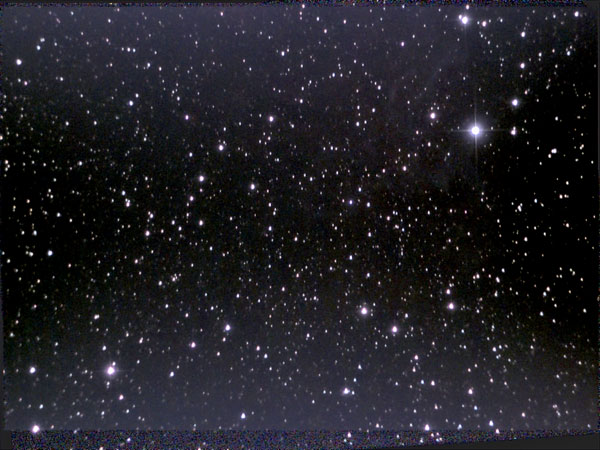 |
Faint red nebula; not easy for the eVscope 2 |
| IC 1396 | Elephant Trunk | Cepheus | GNE | 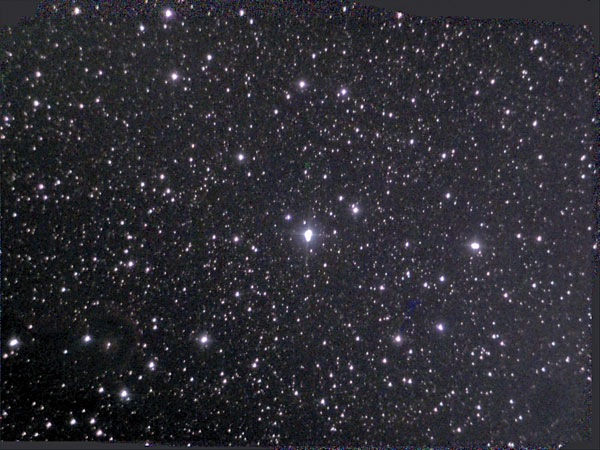 |
Becomes visible after long exposure times |
| IC 1805 | Heart Nebula | Cassiopeia | GN/OS | 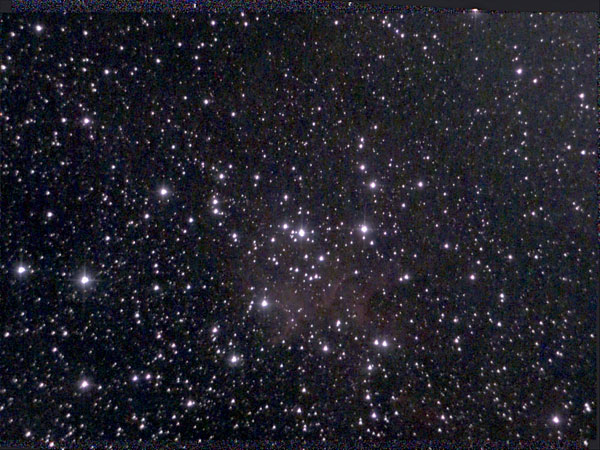 |
The galactic nebulae IC 1805, IC 1848, and IC 1795 (also named NGC 896) form a larger nebulosity region in the constellation Cassiopeia, not far away from the Perseus Double Cluster NGC 869/884. |
| IC 1848 | Soul Nebula | Cassiopeia | GN/OS | 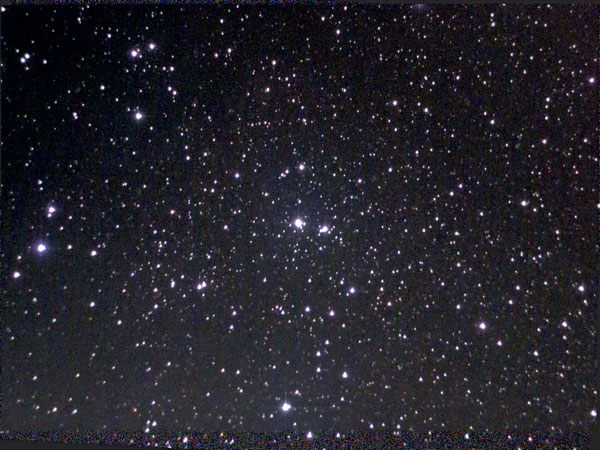 |
The galactic nebulae IC 1848, IC 1805, and IC 1795 (also named NGC 896) form a larger nebulosity region in the constellation Cassiopeia, not far away from the Perseus Double Cluster NGC 869/884. |
| IC 5070 | Pelican Nebula | Cygnus | GNE | 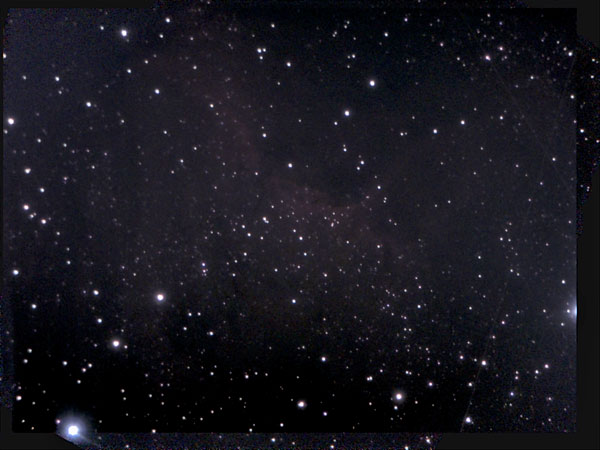 |
Large reddish nebula |
| IC 5146 | Cocoon Nebula | Cygnus | GNE | 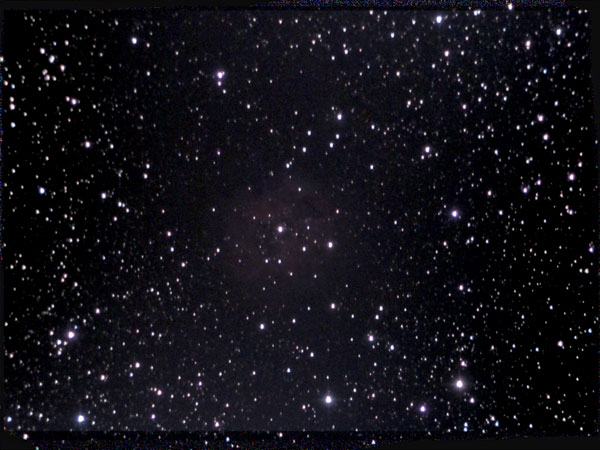 |
Small reddish nebula with embedded open star cluster Cr 470 |
| NGC 281 | Pacman Nebula | Cassiopeia | GE | 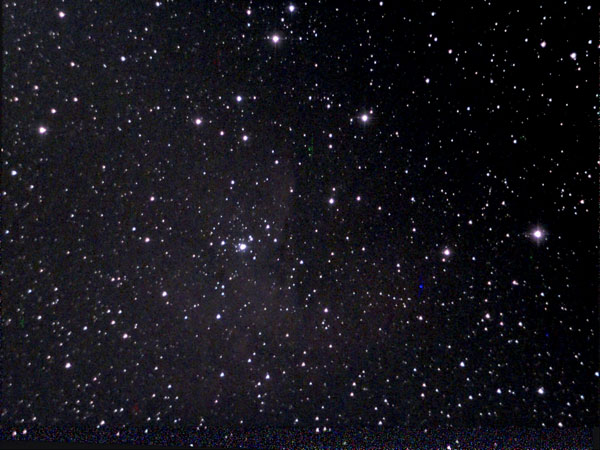 |
Reddish nebula, fits the eVscope 2's FOV |
| NGC 404 | Mirach's Ghost | Andromeda | G | 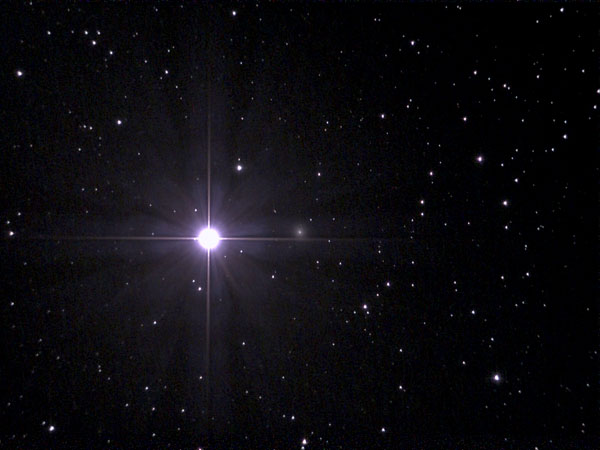 |
Galaxy close to Mirach, therefore called Mirach's Ghost |
| NGC 457 | Owl/E.T. Cluster | Cassiopeia | OC | 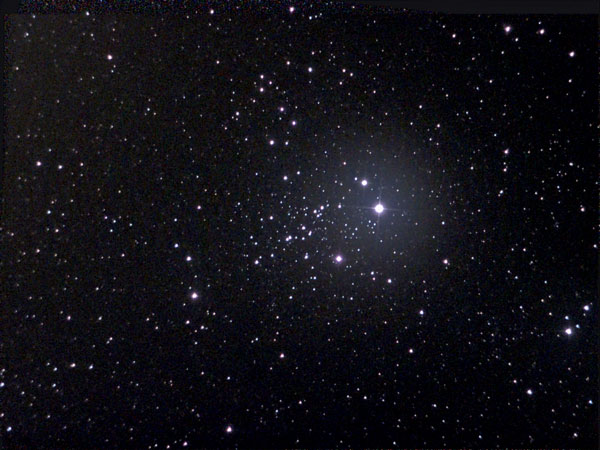 |
Nice, particularly the eyes; somewhat hazy during the observation |
| NGC 663 | Cassiopeia | OC | 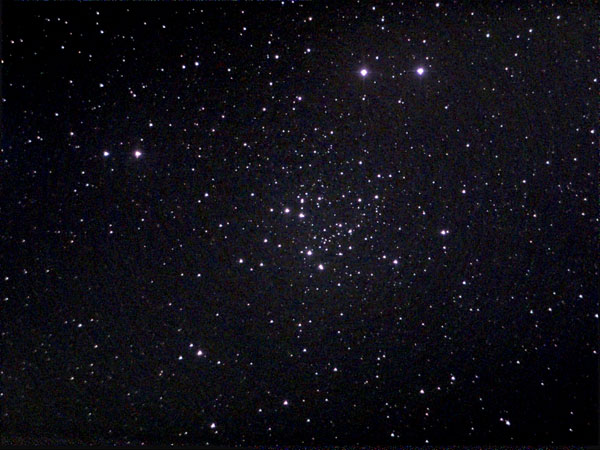 |
Large | |
| NGC 752 | Andromeda | 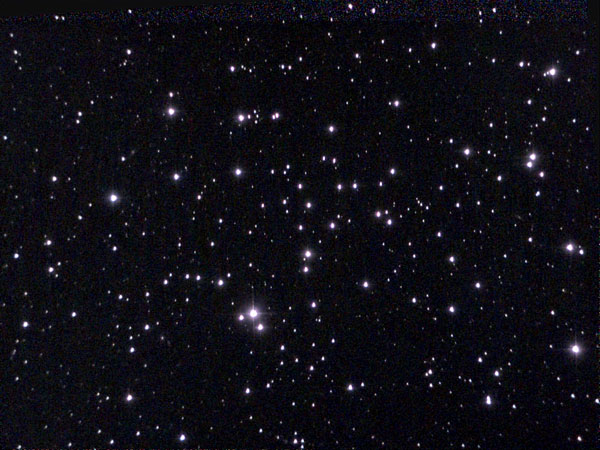 |
Large open star cluster | ||
| NGC 869 | h Persei, part of the Perseus Double Cluster | Perseus | OC | 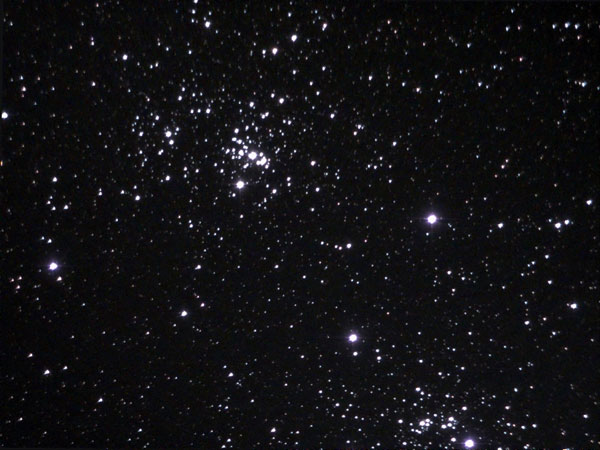 |
Both clusters together are too large for the eVscope 2's field of view; the more compact cluster of the two |
| NGC 884 | chi Persei, part of the Perseus Double Cluster | Perseus | OC | 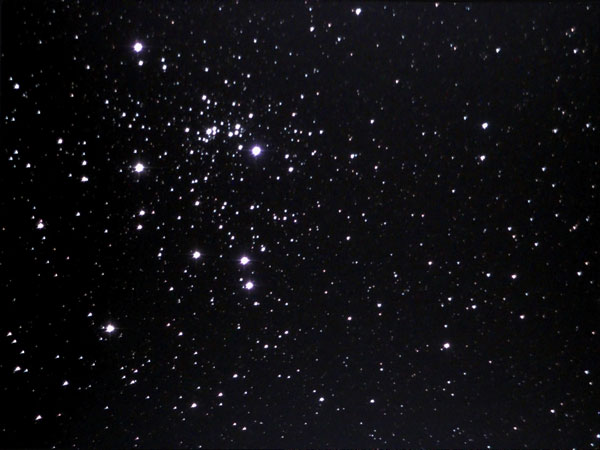 |
Both clusters together are too large for the eVscope 2's field of view; for me, this is the nicer cluster |
| NGC 891 | Andromeda | G | 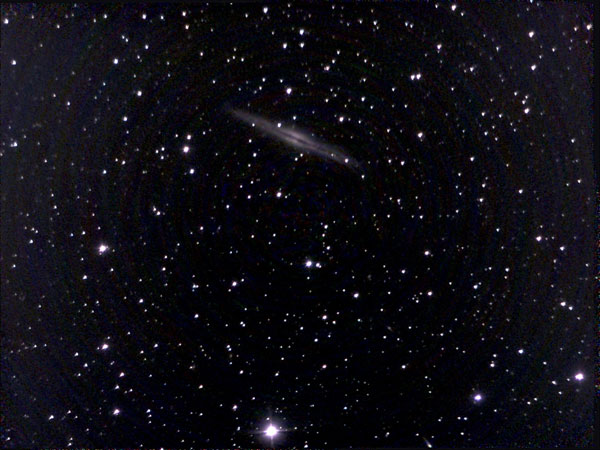 |
Seen from the side; nice | |
| NGC 1499 | California Nebula | Perseus | GN | 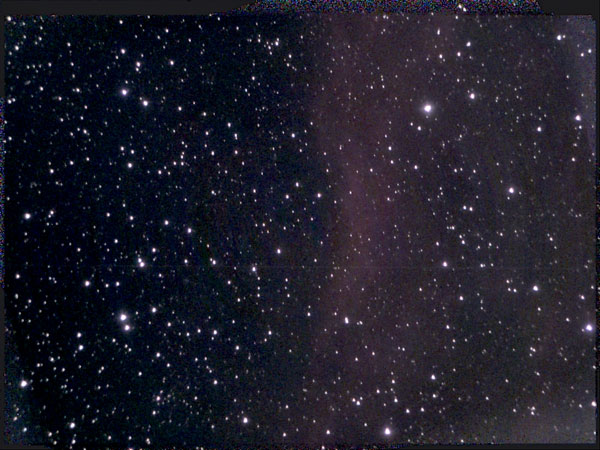 |
Nothing or little to see... Faint and probably too large for the eVscope 2... |
| NGC 1977 | Running Man Nebula | Orion | GR | 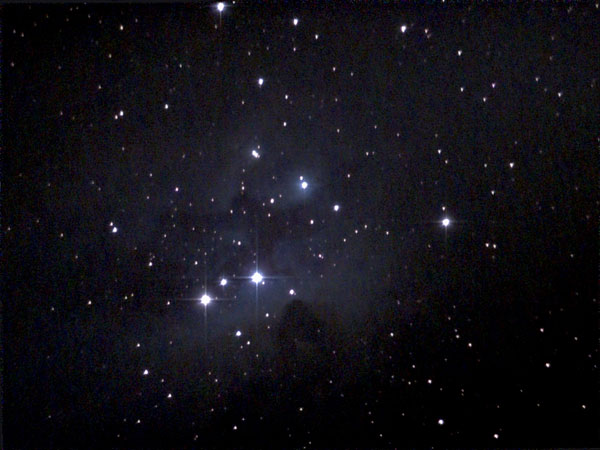 |
The Running Man Nebula includes the reflection nebulae NGC 1977, 1973, and 1975 as well as the open star cluster 1981; a dark nebula has the shape of a running man; needs long times in Enhanced Vision mode |
| NGC 2024 | Flame Nebula | Orion | GE | 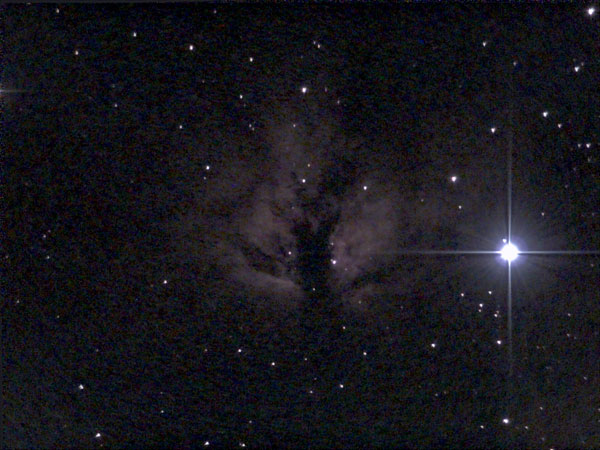 |
Rather faint reddish nebula next to Alnitak; not easy for the eVscope 2 |
| NGC 2071 | Orion | GR |  |
North of M 78 in Orion | |
| NGC 2244 | Open star cluster in Rosette Nebula | Monoceros | OC | 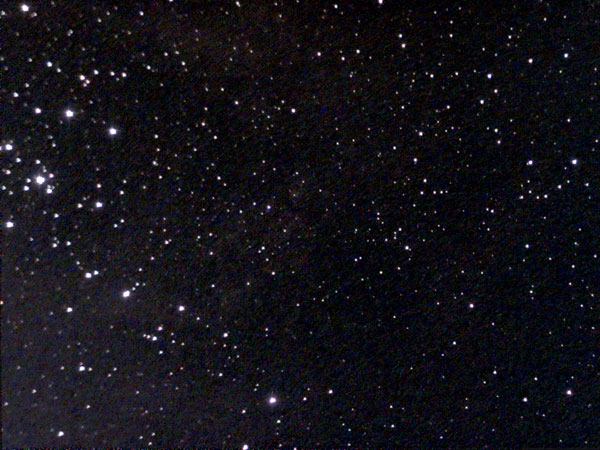 |
Nice to see (did not find the embedding nebula, the Rosette Nebula) |
| NGC 2264 | Christmas Tree Cluster/Conus Nebula | Monoceros | OC | 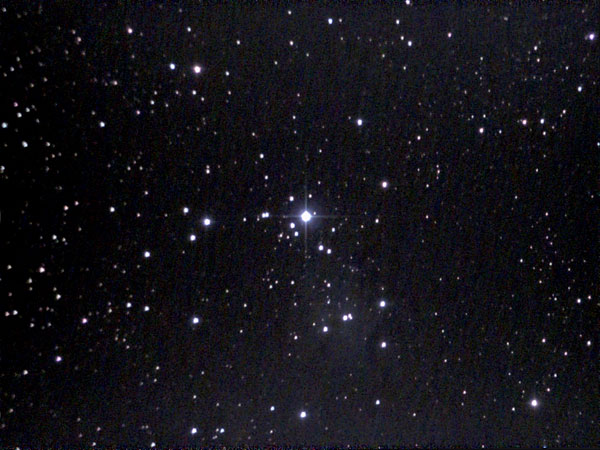 |
Saw only the star cluster. |
| NGC 2903 | Leo | G | 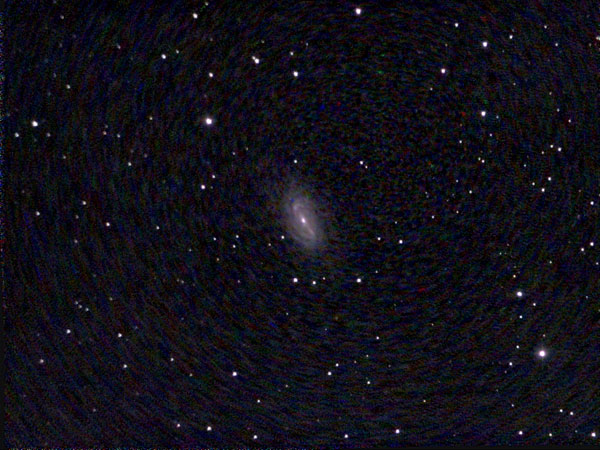 |
One of the brighter spiral galaxies; unclear why Messier missed it... | |
| NGC 3628 | Part of Leo Triplet (Arp 317, Holm 246) | Leo | G | 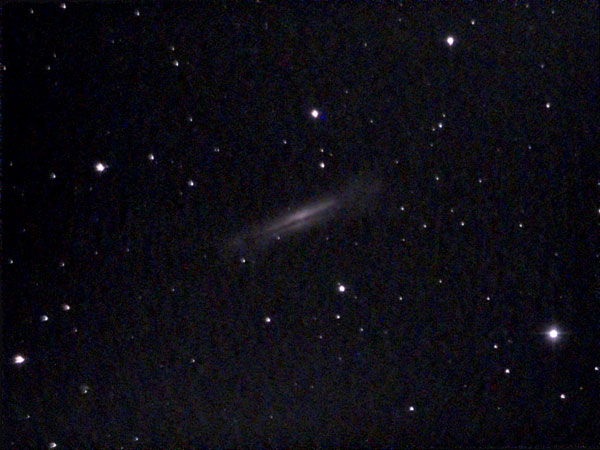 |
Spiral galaxy seen edge-on; it forms a conspicuous group with M 65 and M 66, the Leo Triplet (Arp 317, Holm 246) . |
| NGC 4387/88/4402 | Great Galactic Face; see also M 84/86 | Virgo | G |  |
Three small galaxies close to M 84 and M 86; more or less in the eVs' FoV. NGC 4387 is a small elliptical galaxy and the nose of the "Great Galatical Face"; NGC 4388 is a spiral galaxy, and forms the mouth; NGC 4402 is a spiral galaxy on top of the GGF. In a Vespera mosaic you can see the whole GGF and the whole Markarian's chain. |
| NGC 4435/38 | The Eyes | Virgo | G | 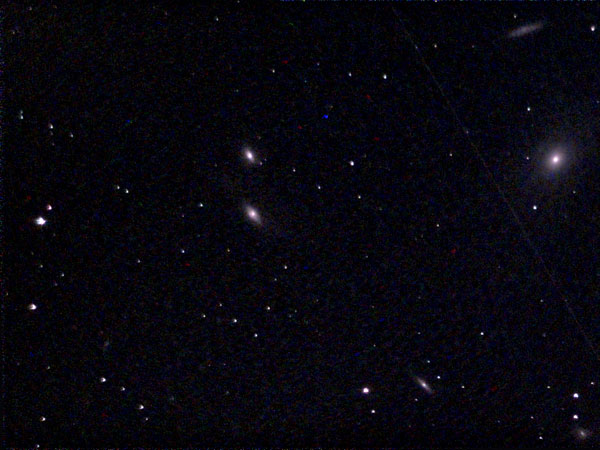 |
NGC 4435 is a lenticular galaxy and interacts with the lenticular galaxy NGC 4438, that is about 100,000 light years more distant. Both galaxies together form "The Eyes". |
| NGC 4461 | with NGC 4458 | Virgo | G | 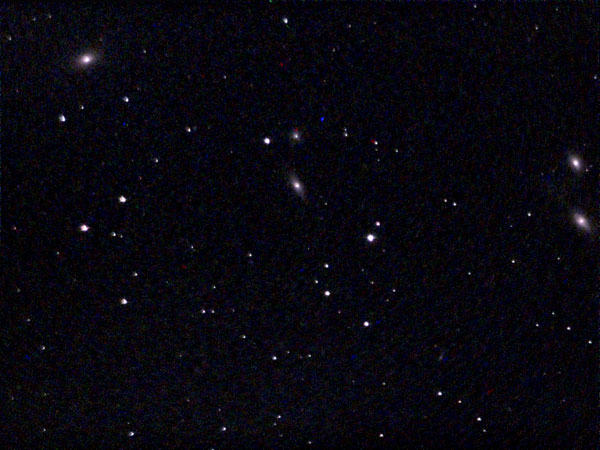 |
The galaxies NGC 4461 (lenticular) und NGC 4458 (elliptical) in constellation Virgo are members of Markarian's chain and interact with one another. If the galaxies are moved towards the top left of the field of view, you can also see the lenticular galaxies NGC 4438 and NGC 4435 (The Eyes) in the same field of view with the eVscope 2. |
| NGC 5371 | + Hickson 68 | Canes Venatici | GN | 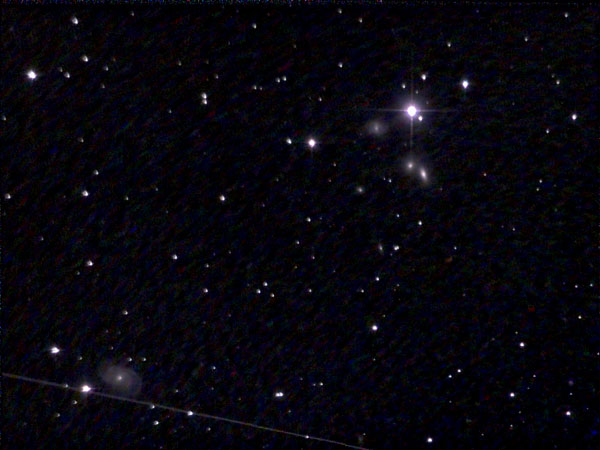 |
Spiral galaxy and galaxy group Hickson 68; small, but found both! |
| NGC 6888 | Crescent Nebula | Cygnus | GE | 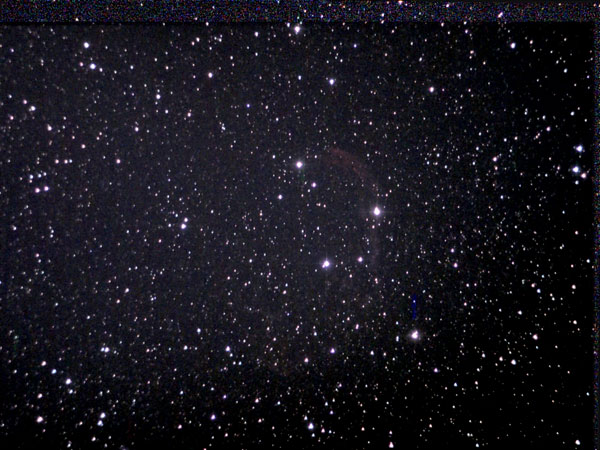 |
Nice, but faint |
| NGC 6960 | Western Veil Nebula | Cygnus | GN | 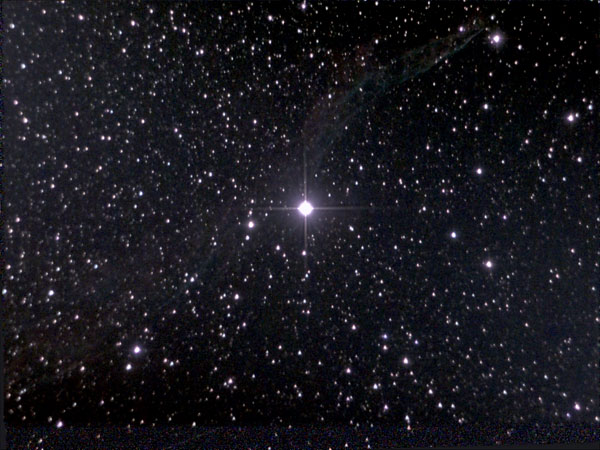 |
Rather faint |
| NGC 6992/5 | Eastern Veil Nebula | Cygnus | GN | 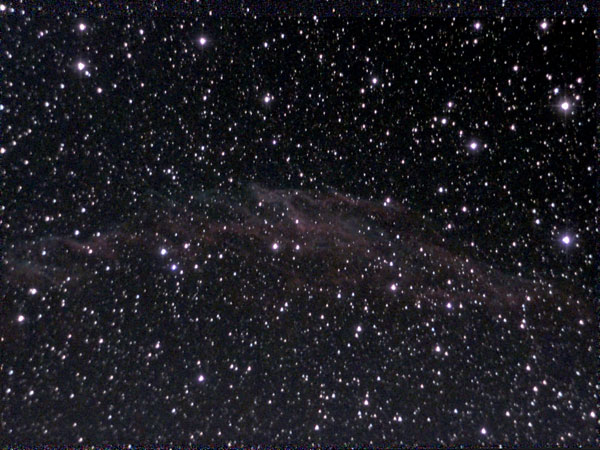 |
Faint |
| NGC 7000 | North America Nebula | Cygnus | GN | 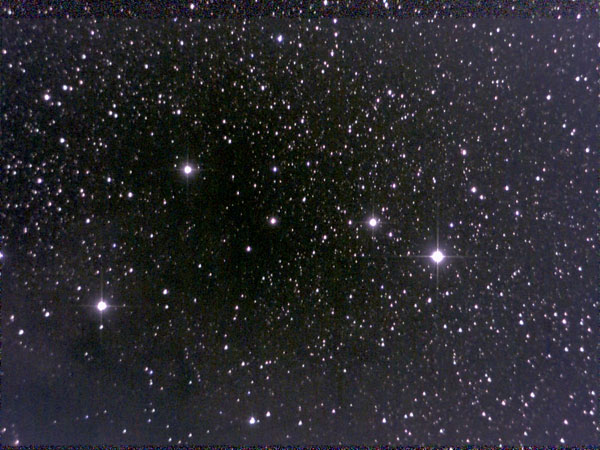 |
Too large for the eVscope 2 |
| NGC 7023 | Iris Nebula | Cepheus | GN | 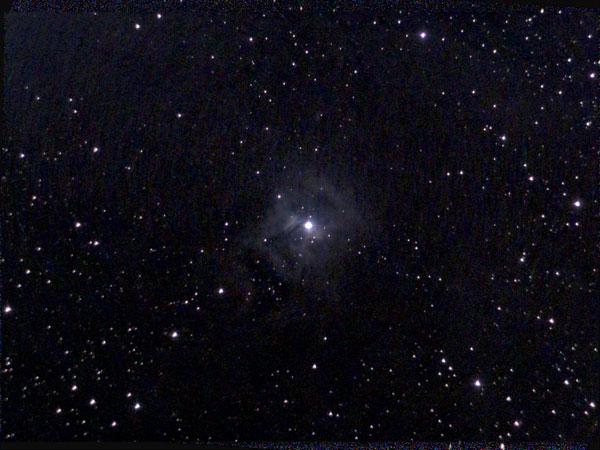 |
NGC 7023 is the name of an open star cluster containing the Iris Nebula. The Iris Nebula is a reflection nebula illuminated by a central star. |
| NGC 7317 | Stephan's Quintet | Pegasus | G | 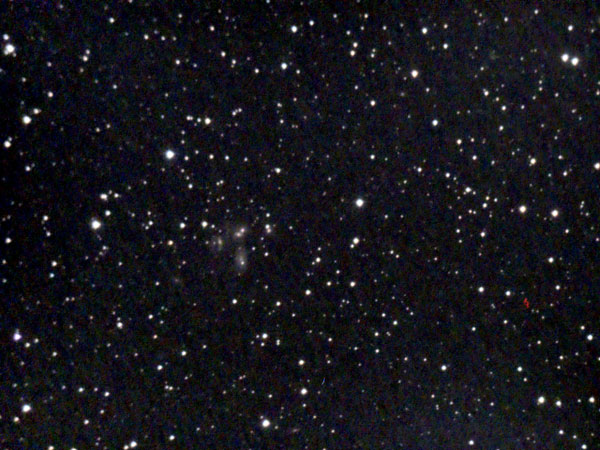 |
Part of Stephan's Quintet, a group of small galaxies. In the eVscope 2 it is even smaller than in the eVscope... |
| NGC 7331 | with NGC 7335, NGC 7336, NGC 7337, and NGC 7340 | Pegasus | G | 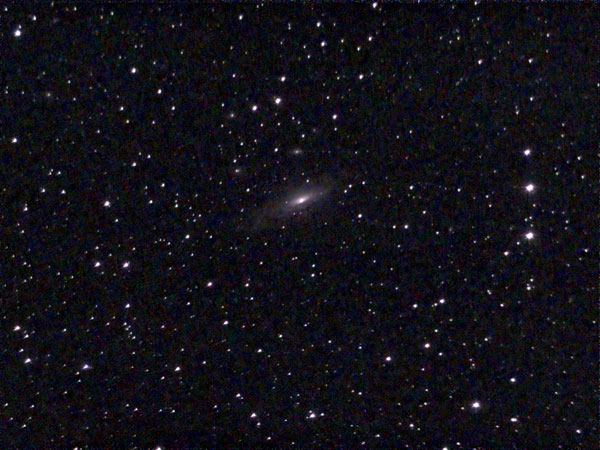 |
The galaxy NGC 7335 and one smaller galaxy can be seen on the photos; it is possible to have also Stephan's Quintet on the eVscope 2 photo. |
| NGC 7635 | Bubble Nebula | Cassiopeia | GN | 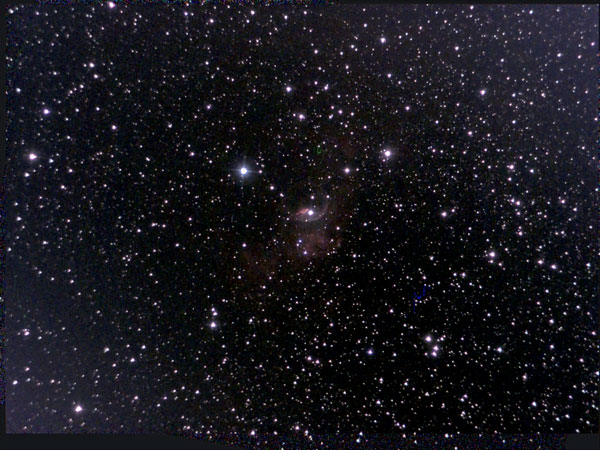 |
Nice, is located close to the well-known open star cluster M 52. |
| C/2022 E3 (ZTF) | C | 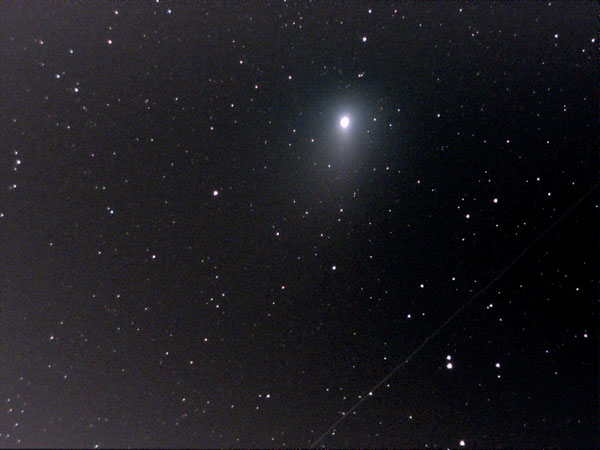 |
Central part visible, became longer with longer exposure (the comet moves differently than the stars) | ||
| Jupiter | P | 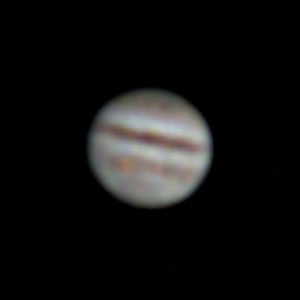 |
Seen with EV planet mode | ||
| Mars | P | 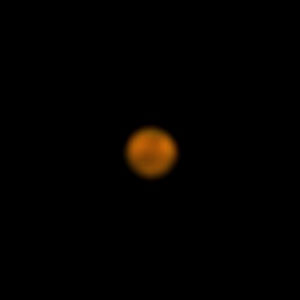 |
Seen with EV planet mode | ||
| Saturn | P | 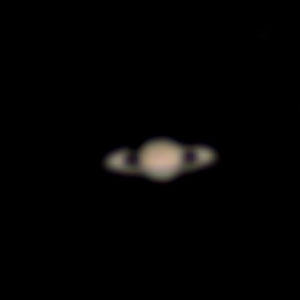 |
Seen with EV planet mode | ||
| Venus | P | 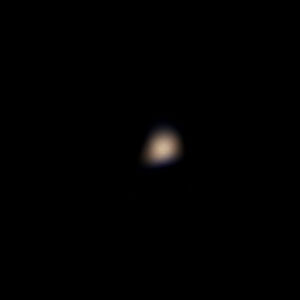 |
Seen with EV planet mode; indication of a crescent (no round disk) | ||
| Moon | M | 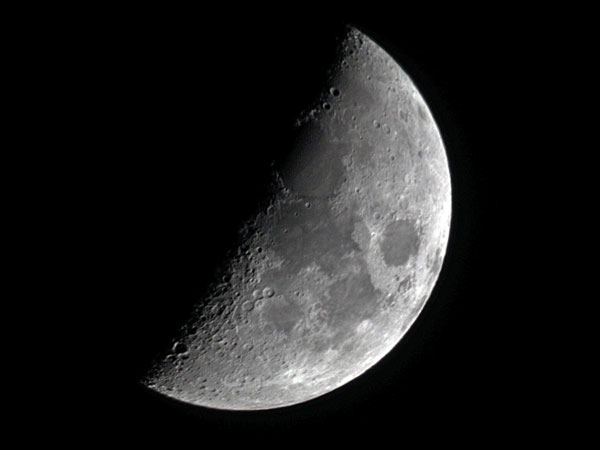 |
Observed nearly full moon, nearly half moon and crescent (waxing moon); the moon fits the FOV of the eVscope 2 |
G = galaxy, OC = open star cluster, GC = globular star cluster, GN = galactic nebula, GE = galactic emission nebula, GR = galactic reflection nebula, DN = dark nebula, C = comet, PN = planetary nebula, SP = star pattern, SC = star cloud, SR = supernova remnant, HII = HII region (emission nebula in other galaxies), P = planet, M = moon
References
Books
- Michael Feiler & Philip Novak (2023). Deep Sky Reiseatlas (5. Auflage), Oculum Verlag (ISBN 978-3-949370-04-5)
www.oculum-verlag.de/detailview?no=608 - Ronald Stoyan (2021). Deep Sky Reiseführer (6. Auflage), Oculum Verlag (ISBN 978-3-938469-72-9)
www.oculum-verlag.de/detailview?no=603 - Erich Karkoschka (2022). Atlas für Himmelsbeobachter, Kosmos Verlag (EAN: 9783440173602)
www.kosmos.de/de/atlas-fur-himmelsbeobachter_1074889_9783440173602
On this Website
| 22.09.2024 |